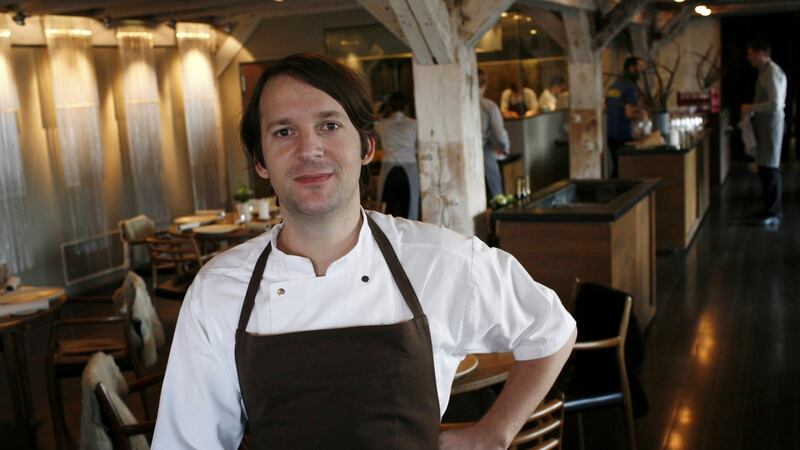Welcome to the pleasurable spiderweb. That's how restaurateur Danny Meyer summed up his hospitality philosophy in a Creative Minds talk in Dublin organised by US ambassador Kevin O'Malley. The ambassador is also a restaurateur and gives a copy of Meyer's 2006 book Setting the Table to every member of staff when they join his Washington restaurant.
“Whenever you come to one of our restaurants, you do feel like you’re one of the family,” Meyer said. This is not just because of legendary American service. Restaurants have been doing their online homework and know more about you now than ever before. Meyer’s managers use a system called Venga to mine social media and create profiles of their customers, from reservations to their preferences.
No more “still or sparking?” questions from your waiter. In this guest experience management system they will know your likes and dislikes better than you know them yourself. It’s a trend that makes googling your reservations names look like amateur hour.

Does your dinner need to be backed up with a CIA-level dossier of personal information? Probably not, but it’s one of the global dining trends expected to wash up here. So what are the others and where in the world would I like to pull up a chair and eat dinner this year?
Show and smell
The school of show cooking, where diners watch dinner being assembled is starting to feel dated. So will kitchens take diners further back in the chain?
René Redzepi is closing Noma and relocating it to the heart of an urban farm. It's hard not to see him incorporating the harvesting (and perhaps even killing) of ingredients into the dining experience. And what Redzepi does, others follow, as proved by the number of chefs who now wear a dark apron over their chefs' whites.
Kidult kitsch
Chefs are mining their own childhoods to give us food that whooshes us back to when we were kids. A cynic might say it's the only way left to wow the jaded palate of the person who can afford to tick the top 50 off their lists. Ferran and Albert Adrià's Heart, in Ibiza's five-star Gran Hotel, combines circus, art, partying and food.
On a tour of Adria's el Bulli lab in Barcelona we saw caviar spiders and tapas drawers where the jokey approach put fun into fine dining. At Albert's Barcelona restaurant Tickets the dessert course was served in a dessert room where you snipped candied fruit from trees with scissors and helped yourself to a cigar that tasted (weirdly, deliciously) like the smell of cigars. Fun and games coming to a restaurant near you.
War on waste
Restaurant kitchens are some of the most wasteful places on the planet, but that's changing. Italian celebrity chef Massimo Bottura pointed to a gold-plated rubbish bin in his office to talk about how the 1.3 billion tonnes of food wasted every year is one of the most urgent issues that chefs have to address. At his Refettorio Ambrosiano at Milan Expo he invited chefs to come and cook waste from the Expo site for refugees.
Brighton in the UK is home to the first zero-waste restaurant. At Silo they mill their own flour, brew their own beer, source directly in reusable containers and compost all their food waste. And they grow mushrooms in their used coffee grounds.
Multi-sensory dining
French chef Paul Pairet's Shanghai restaurant Ultraviolet has 10 seats at one table. Diners sit in a blank room that is transformed with each course with wall projections, multi-channel sound and smells piped into the room. So seafood is served with the sounds of waves and seagulls, the smell of seaweed and ocean breezes and vaporized iodine water with blue lights.
Pairet says his aim is to amp up the flavours of the dishes with emotion which changes how we experience taste. Expect whale music at your next seafood dining experience.
A flight to Stockholm, a four-hour train trip and a further drive will get you to one of the world's most remote restaurants, Faviken in the frozen north of Sweden. Magnus Nilsson told the first Mad Food Camp in 2011 how he manages to feed diners using only local ingredients when his larder spends long months in deep freezer conditions.
Trenches were dug for potatoes, foods harvested in the long summer days were dried, salted and fermented into cryogenic suspension and then reanimated into delicious dishes.
Faviken is a commitment like few others. It is so remote an overnight has to be factored into the cost and the time. favikenmagasinet.se.
The Dairy in Clapham, London is not such an odyssey, but after seeing Irish chef patron Robin Gill demonstrate his smoked whiskey butter at the Appetite Talks in Dublin's Smock Alley last November, I've been hatching plans. the-dairy.co.uk
And while I'm in those parts I'd also love to try Tom Kerridge's Hand and Flowers. thehandandflowers.co.uk
The circus that is the San Pellegrino World's 50 Best Restaurants rolls into New York this year for the first time. Daniel Humm's 11 Madison Park (hotly rumoured last year to have taken the top slot) is top of my go-to list in the city. elevenmadisonpark.com











